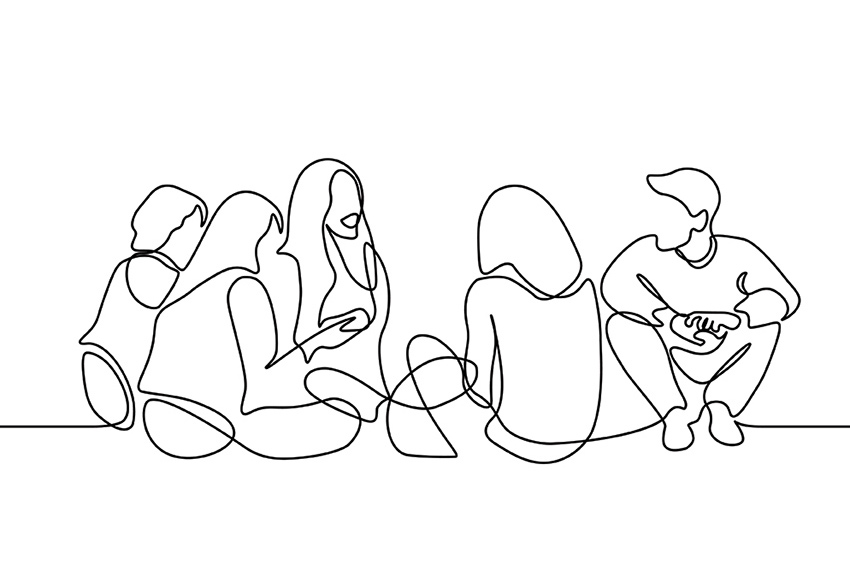Adolescence, a phase with so many emotional, academic, social, sexual, and cognitive changes, often leaves parents and teenagers feeling unsure: is this ‘just normal adolescence’ or something more serious? It’s not unusual for parents to wonder about mental health diagnoses to make sense of things. They might wonder whether what their teenager is going through points to depression, anxiety, or maybe a hidden neurodevelopmental condition.
But why do teenagers also seek these diagnoses more frequently in recent years? I think there is a number of different reasons, some more obvious than others.
Seeking clarity
The obvious first. A diagnosis may be wanted because of the (very understandable) wish for clarity. Just as a physical diagnosis sheds light on what’s happening inside our body, a mental health diagnosis can hopefully answer, once and for all, the question: ‘what’s going on with my mind and how can I address it’?
Except it’s never as simple as that, not even in medicine, let alone the area of mental health. In medicine, there are conditions with clear physical markers, such as an underactive thyroid, a broken bone, or appendicitis. But certain illnesses lack these markers, and what’s needed then is a combination of clinical judgment, medical history, lab tests (if available), patient-reported symptoms, and sometimes trial and error with medications. Only then can a conclusion be reached about diagnosis. Not to mention the thorny question of different opinions. Conditions like migraines, fibromyalgia, chronic fatigue syndrome (ME), and irritable bowel syndrome fall within this category.
The vast majority of psychiatric and developmental conditions belong in this latter category too, relying on clinical assessment, symptom descriptions, and developmental history, rather than physical evidence like brain scans to diagnose. There are exceptions with mental health symptoms that are more clearly linked to something physical: problems after brain injury, or drug-related psychosis. But in the vast majority of cases, despite the advances in knowledge and ongoing research, there are no definitive neurological or genetic signs or brain scans that can be used to diagnose. Mental health conditions are complex and involve an ongoing interaction between biology and environment. What’s going on in our life plays a huge role in whether a set of symptoms will gather force or lie dormant, or whether they will worsen or improve over time.
All this becomes even more complicated when considering diagnoses such as depression or anxiety disorders, which have even less clear and more complicated (and contested) genetic factors. The heterogeneity of almost all mental health and developmental conditions means there is no one size fits all diagnosis, but a range of different problems fitting under each diagnostic umbrella.
Hope and support
Despite all this complexity, a diagnosis can be a pivotal moment in an adolescent’s journey. In addition to the wish for clarity, if offers hope, signalling that perhaps the uncertainty, confusion and pain may come to an end, and practical solutions will follow.
There is some truth in this. Diagnoses can open certain doors for support, including accommodations like rest breaks during exams or prescribed medications. In the United States and the UK, many types of support in health or education hinge on diagnoses, so it’s entirely reasonable for young people to aspire to this recognition. (High on my wish list though would be an educational and health system where teenagers could be supported in individualised, flexible ways according to their strengths, weaknesses and learning style, regardless of a diagnosis. But we are very far from this).
Identity in flux and relief from self-blame
There may be additional motivations behind adolescents’ desire for diagnoses. In the face of the changes and uncertainty adolescence brings, a diagnosis offers an idea of stability, structure and identity in an unpredictable world. So, a diagnosis can become like a stable anchor amid the chaos.
It can also alleviate self-blame. Teenagers, like all of us, often feel blamed for what seems incomprehensible in their feelings, or for what doesn’t fit the way they think of themselves. Society, I think, reinforces this culture of self-blame, promoting a fixed, individualistic mindset: on the one hand there is a widespread fatalism of being genetically ‘this or that’, while on the other hand we are seen as individually responsible for our successes or failures. This contradictory combination of biology-based fatalism and an individualistic approach makes it tempting to attribute our struggles to a condition rather than us as individuals, the diagnosis becoming a protection from confusing pressures.
Trauma bonding in friendships
Some teenagers may also turn to diagnoses to form bonds, often centred around shared symptoms and traumatic experiences. While supporting friends and listening to each other is great, there can be many pitfalls in basing a friendship on having the same diagnosis. ‘Trauma-bonding’ relationships are becoming an increasing issue in today’s adolescent friendship circles, encouraged by online communities focusing on mental health, such as #depressionTok or #anxietyTikTok.
Balancing perspectives on diagnosis
Being aware of all this doesn’t mean that diagnosis doesn’t have value; a formulation can be sometimes very useful for both the individual and the therapist. The point here is that a diagnosis is a first, not final step, in the journey towards self-understanding. Unfortunately, the prevailing attitude today encourages the perception that a diagnosis tells us what we need to know about a person, with limited therapeutic support following the assessment. This is despite our knowledge that – for example – young people with ASD struggle frequently with anxiety and depression and need much more than what a diagnosis can ever hope to offer.
Neurodevelopmental conditions, like any other condition and similar to the temperament we each have, exist on a spectrum. Change is part of that, even with the most stable personality characteristics. A recent podcast discussion with Joshua May on his new book “Neuroethics: Agency in the Age of Brain Science”, captures this well. The term he introduces is ‘the dynamic self’. While we all have a core self with some stability throughout life, there are also continuous changes within that self. These changes occur through experiences like taking psychiatric medications or engaging in psychotherapy. But also through ordinary processes like ageing, pregnancy, raising children, illness, entering (or exiting) a friendship or relationship, moving to a new city, changing jobs. We both stay the same and always change.
A lot more research is needed in how we can support teenagers through this confusing landscape, but opening up conversations with them about all this is an important first step.
Conversations with teenagers about diagnosis and change

How do we discuss all this ? One way is to mention to adolescents how normal change is in life. The adolescent may be experiencing depression, OCD, or anxiety now, but this will not be true forever. We can go down memory lane with them, reminding them of past moments of wellbeing or suffering. In the same way then is different to now, the future will also be different to now.
For young people with neurodevelopmental conditions, recognising the possibility – and ordinariness – of change may feel more challenging. But I think it’s even more crucial. While acknowledging the unique traits a young person has, making them who they are, a teenager can also be reminded that change is ordinary and expected. Their diagnosis is only a part (sometimes a small part) of what makes them who they are.
